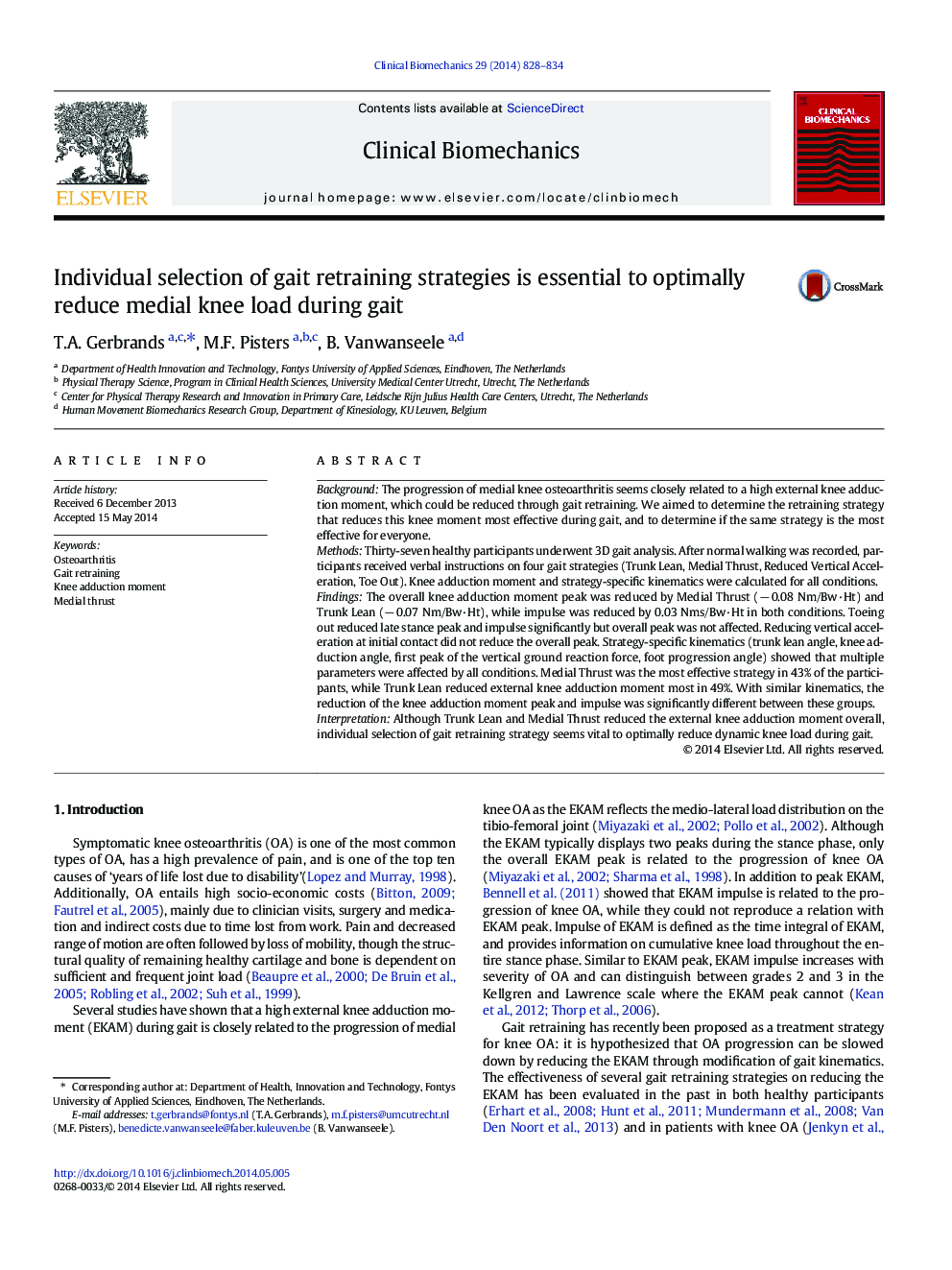| Article ID | Journal | Published Year | Pages | File Type |
|---|---|---|---|---|
| 6204901 | Clinical Biomechanics | 2014 | 7 Pages |
â¢Overall, the knee adduction moment was reduced most by Trunk Lean and Medial Thrust.â¢The effects of gait strategies on the knee adduction moment are subject-specific.â¢Individual selection of gait strategy is essential for optimal training effects.â¢The need for individual selection in patients with knee OA should be investigated.
BackgroundThe progression of medial knee osteoarthritis seems closely related to a high external knee adduction moment, which could be reduced through gait retraining. We aimed to determine the retraining strategy that reduces this knee moment most effective during gait, and to determine if the same strategy is the most effective for everyone.MethodsThirty-seven healthy participants underwent 3D gait analysis. After normal walking was recorded, participants received verbal instructions on four gait strategies (Trunk Lean, Medial Thrust, Reduced Vertical Acceleration, Toe Out). Knee adduction moment and strategy-specific kinematics were calculated for all conditions.FindingsThe overall knee adduction moment peak was reduced by Medial Thrust (â 0.08 Nm/Bw·Ht) and Trunk Lean (â 0.07 Nm/Bw·Ht), while impulse was reduced by 0.03 Nms/Bw·Ht in both conditions. Toeing out reduced late stance peak and impulse significantly but overall peak was not affected. Reducing vertical acceleration at initial contact did not reduce the overall peak. Strategy-specific kinematics (trunk lean angle, knee adduction angle, first peak of the vertical ground reaction force, foot progression angle) showed that multiple parameters were affected by all conditions. Medial Thrust was the most effective strategy in 43% of the participants, while Trunk Lean reduced external knee adduction moment most in 49%. With similar kinematics, the reduction of the knee adduction moment peak and impulse was significantly different between these groups.InterpretationAlthough Trunk Lean and Medial Thrust reduced the external knee adduction moment overall, individual selection of gait retraining strategy seems vital to optimally reduce dynamic knee load during gait.
